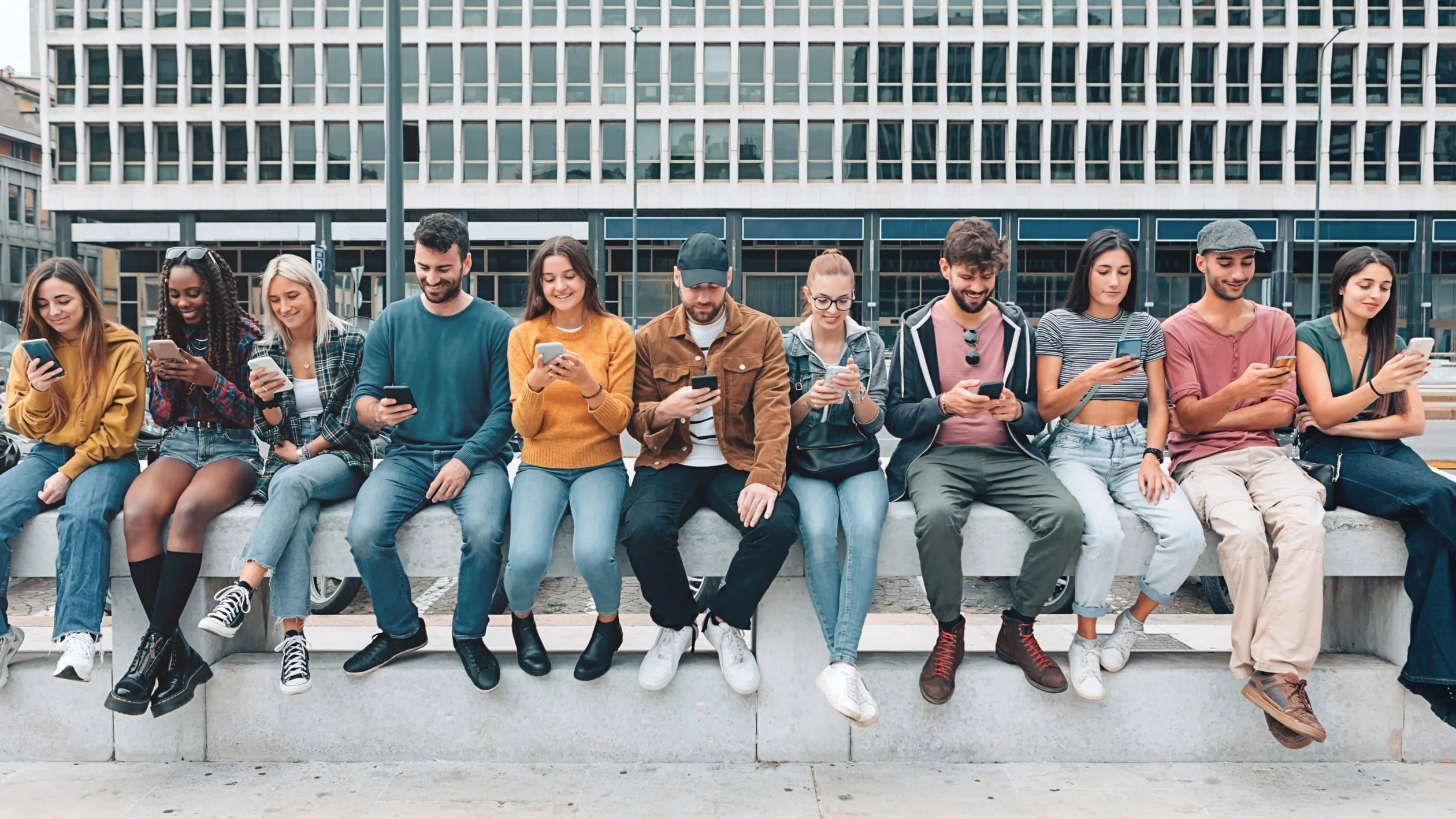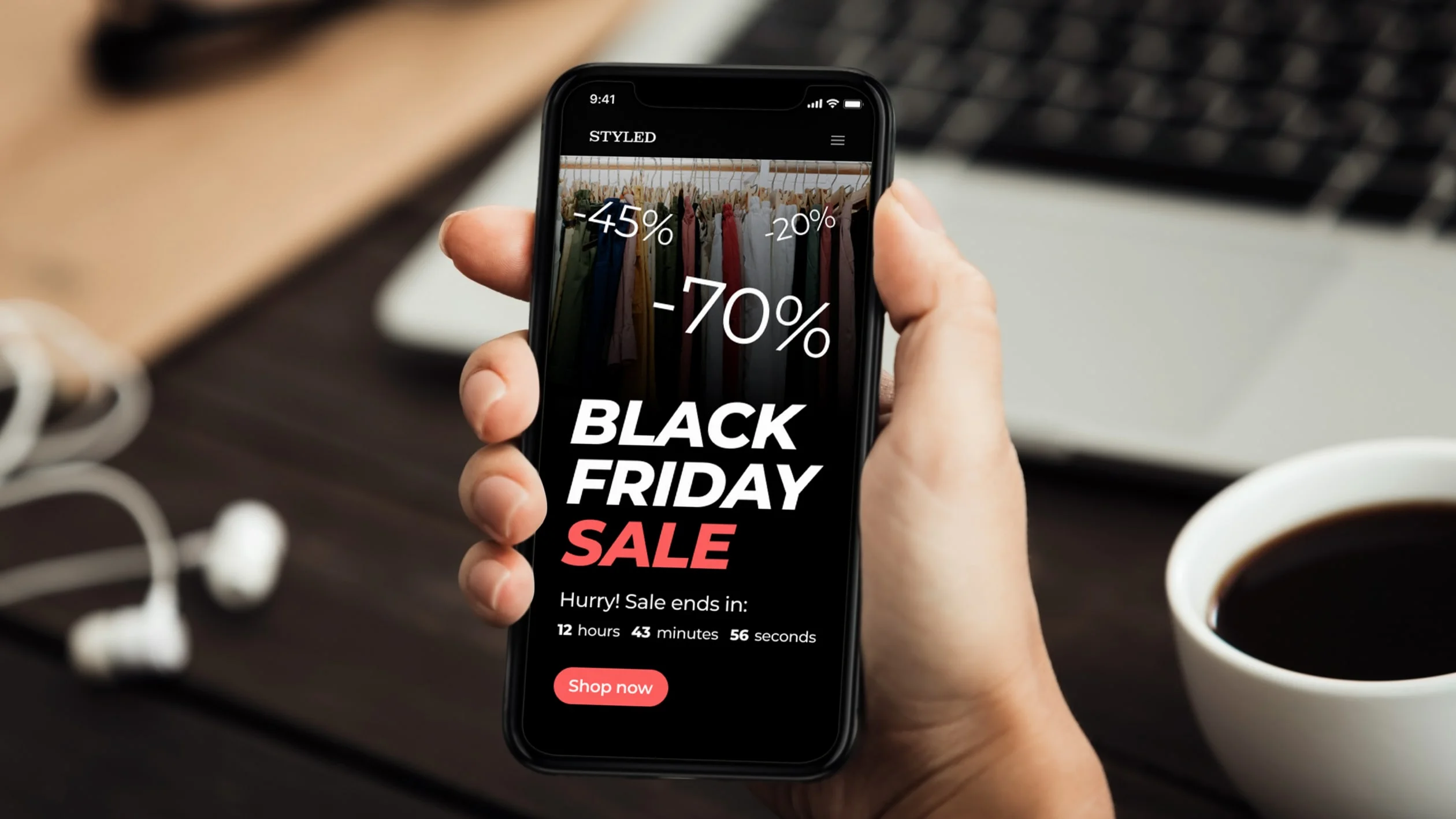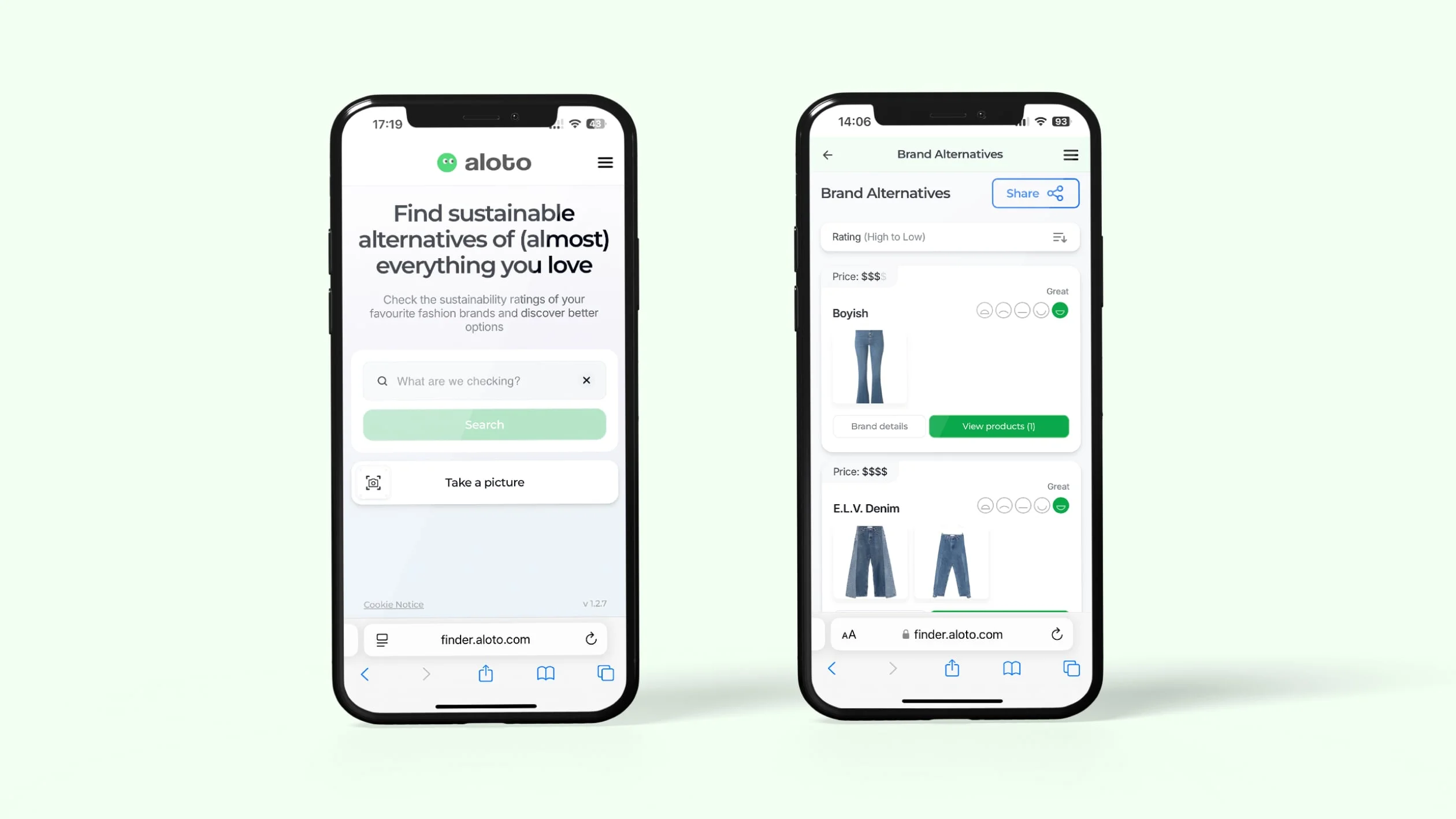You know that feeling, right? That sudden urge to purchase something you hadn't planned — the thrill of adding to cart, that momentary euphoria when you hit checkout. We've all been there with impulse buying, especially when it comes to fashion. But here's what I find fascinating: what exactly happens in those moments between browsing and buying? And more importantly, how can understanding these psychological tricks help us stop impulse buying and develop better style choices?
Here's the thing — our purchasing behaviors aren't just simple transactions. They're this intricate dance between emotion, identity, and brain chemistry that's worth exploring, particularly as we're all navigating an increasingly digital marketplace. At Aloto, we're dreaming of a world where ethical clothing and sustainable fashion brands become the obvious choice for conscious shoppers. That's why we created finder.aloto.com to help you discover better alternatives effortlessly.
This guide digs into what's really happening when that spending urge hits, and how we can flip these situations into opportunities for more thoughtful consumption.
Wondering if you should read the whole thing? Here's what we'll cover:
Let's start with the basics. An impulse purchase happens when you buy something without thinking it through first. These snap decisions often bypass our logical thinking — triggered by how we're feeling, what we see around us, or clever marketing tricks. Unlike those planned purchases that actually fill a gap in your wardrobe, impulse purchases are all about instant gratification. And let's be honest, they can really mess with your financial situation and personal values.

Here's something that might surprise you: unplanned spending makes up a huge chunk of online shopping activity, especially in fashion. Clothes and accessories? They're right up there with the most spontaneous purchase categories. Understanding just how common this is helps us spot when we're making choices based on fleeting wants rather than genuine needs.
The digital age has completely changed the game. What used to be an occasional in-store "oops" moment is now a 24/7 possibility. One-click purchasing, saved payment details, constant access to online stores — the barriers between "I want it" and "I own it" have basically vanished. Don't get me wrong, this convenience has its perks, but it definitely requires us to be more aware if we want to keep control over our spending habits and protect our savings.
Look, the line between mindful purchasing and compulsive buying can get pretty blurry on our style journeys. So how do you actually recognise when your fashion consumption has shifted from joyful browsing to something more problematic?
Here are some subtle signs that might indicate things are shifting with your fashion buying habits:
Here's what psychology experts have discovered: online fashion environments can actually trigger responses similar to gambling. Especially when you throw in those "buy now, pay later" services that are everywhere in Australia. The constant stream of new arrivals, flash sales, and influencer posts creates this heightened anticipation that can completely override logical thinking.
These patterns aren't about judging yourself — they're actually valuable insights into how we relate to consumption, self-image, and our increasingly seamless online world. Recognising these behaviours is honestly the first step toward more intentional spending habits and learning how to stop impulse buying effectively.
And here's the kicker: that dopamine hit from making a purchase? It activates the exact same reward pathways as other pleasurable activities. No wonder the anticipation of buying something new feels so compelling, even when we logically know we don't need it.
Now, while any of us can fall into the impulse buying trap, psychological research has pinpointed some specific groups who seem more susceptible to fashion-related purchasing influences. (Don't worry if you recognise yourself here — awareness is half the battle!)
Women going through major life changes are particularly vulnerable. Think career shifts, relationship changes, or significant life events. During these uncertain periods, fashion buying often becomes a way to regain some sense of control and confidence. These transitions create emotional vulnerability that can definitely lead to increased spending.
Young urban adults face their own unique pressures. In socially dynamic environments—universities, new jobs, busy city life — there's this constant pressure to maintain certain appearances through clothing choices. University students and people starting their careers often feel this most intensely. Social media doesn't help either.

Heavy social media users (and let's face it, that's most of us) get hit particularly hard, especially if you're following fashion influencers. The constant stream of perfectly styled content creates these artificial needs that have nothing to do with what's actually missing from your wardrobe. The curated nature of Instagram feeds just amplifies these effects.
Then there are people who've turned to retail therapy for emotional regulation. If you're using purchasing as your primary method for managing stress, anxiety, or mood swings, you're in this group. This bunch often struggles most with developing healthy spending habits because their purchasing behavior is actually serving an emotional function.
Finally, high self-monitors — people who are super sensitive to social cues and peer approval—often use fashion as a tool for social acceptance and status maintenance. Sound familiar?
Understanding these vulnerability factors helps us navigate our own spending behaviors with way more awareness, regardless of which category we might identify with.
So what's really driving these impulse purchases? Understanding the root causes helps us develop better strategies to actually control these behaviors. Here are the main culprits:
Emotional Triggers: This is a big one. Stress, boredom, loneliness, excitement — even happiness — can all trigger impulse shopping. Many of us unconsciously use retail therapy as our go-to coping mechanism. You know, seeking that temporary mood boost from buying something new. Been there!
Environmental Factors: Here's where it gets sneaky. Store layouts, website designs, those countdown timers — they're all specifically engineered to encourage spontaneous acquisitions. From clever product placement to creating artificial urgency ("Only 3 left in stock!"), the environment itself is designed to override our rational thinking.
Social Influences: Peer pressure didn't end in high school. Social media exposure and that desire to keep up with appearances drive so many impulse purchases. FOMO on trends or social acceptance often completely overrides our financial goals and budget considerations.
Neurochemical Responses: This one's fascinating. The anticipation and actual act of purchasing trigger dopamine release — that brief but powerful rush of pleasure. This neurochemical reward can genuinely become addictive, leading to repeated impulse buying behaviors. It's not a lack of willpower; it's brain chemistry.
Poor Financial Awareness: Let's be honest — many of us don't have a crystal-clear picture of our financial situation. Without that clarity, it's really hard to assess whether an expense fits our budget. When you don't have proper money management systems in place, every purchase can feel justifiable in the moment.
Digital platforms have made all of this worse. One-click purchasing removes any natural pause points. Social media creates constant exposure to new products. Personalised advertising uses sophisticated algorithms to hit us with targeted content at our most vulnerable moments. It's like they know exactly when we're most likely to cave!
The rise of e-commerce has completely changed how we approach fashion consumption — and honestly, not always for the better. Digital platforms have become incredibly sophisticated at identifying triggers that bypass our rational decision-making. Let me break down what's happening:
Remember when buying something required actual effort? You had to drive to the shops, find parking, wait in queues, handle cash or cards. All those steps gave you multiple chances to think "Do I really need this?"
Now? Saved payment details, one-click buying, streamlined checkouts — all the natural pause points have vanished. This frictionless experience is super convenient (don't get me wrong), but it can seriously undermine our intention to spend mindfully and avoid overspending.
Hands up if you've ever found yourself scrolling through fashion sites in bed, making purchases when you're exhausted and your willpower is basically non-existent. These late-night sessions are almost always followed by morning regret and some serious financial concerns.
Here's what researchers have found: our decision-making quality tanks when we're tired. The part of our brain responsible for executive decisions and impulse control becomes way less active during fatigue. Online retailers absolutely know this — they often send targeted emails and notifications during evening hours when our defences are completely down.
"Only 2 items left!" "Sale ends in 3:42:18!" Sound familiar? These digital urgency cues are designed to activate our primitive survival instincts around scarcity. These marketing tactics deliberately trigger FOMO, pushing us to make purchases through artificial time pressure rather than genuine need.

It's clever (and slightly evil) because they're exploiting our brain's evolutionary programming. Our ancestors who acted quickly when resources were scarce were more likely to survive. Modern marketing leverages this exact same psychological response, even when the scarcity is completely made up.
Ah, Afterpay and Zip — these services have absolutely transformed the fashion purchasing landscape for us Aussies. They've become incredibly popular because they create this interesting psychological phenomenon: they separate the immediate satisfaction of getting something new from actually having to pay for it.
Now, these tools can offer genuine flexibility and budget benefits (I'm not against them). But understanding their psychological impact helps us make more mindful decisions. When there's this time gap between purchase and payment, it can blur our usual spending boundaries, making it way easier to buy things we might otherwise think twice about.
Alright, here's the good news: once you're aware of what's happening, you've got options. Here are some genuinely effective approaches I've seen work for developing more intentional purchasing habits (that'll benefit both your wardrobe and your bank account):
This might sound a bit nerdy, but strategically restructuring your online environment actually works:
Here's what financial psychology researchers have found: setting "no-spend windows" tied to your emotional states can be remarkably effective. Just being aware of your triggers before you start browsing can significantly cut down on those impulsive acquisitions.
Honestly, this is one of the most effective ways to stop impulse buying:

I can't stress this enough — actually knowing where your money goes often reveals some pretty eye-opening stuff about your impulse buying habits. Start monitoring your fashion spending and monthly expenses by tracking:
This kind of data helps you spot patterns and triggers. Most people discover they're spending way more than they realised on impulse acquisitions, which often leads to regret and a pretty compromised financial situation.
This one's huge. Cutting down on fashion content in your social feeds can dramatically decrease those impulse buying triggers:
Social media algorithms are literally designed to show you content that gets you engaged — and that often includes products that trigger desire. By controlling what you're exposed to, you reduce how often those psychological triggers hit and better protect your savings.
Take a moment to examine the thoughts that come up before you feel that purchasing urge:
By gently questioning these assumptions, you can start separating genuine style desires from emotional compensation. This process helps reduce impulse buying while still letting you enjoy thoughtful fashion choices.
Understanding the psychology behind impulse buying isn't about killing the joy of fashion. Not at all! It's about getting back some control over our style choices. When we actually recognise our triggers and put some thoughtful systems in place, purchasing shifts from this reactive thing to conscious curation.
Each mindful purchase becomes a proper investment — in both your personal style and financial wellbeing. This journey definitely requires patience (trust me on this one). Changing spending habits takes time, and the occasional impulse shopping moment doesn't undo your progress. The goal isn't perfection; it's awareness, intention, and gradually getting your purchasing decisions to align with what actually matters to you.
Every time you pause before hitting "buy now," question what's driving that urge, or choose a sustainable alternative, you're building your ability to maintain control over your finances. These small actions genuinely compound over time, creating lasting changes in how you relate to consumption and helping you stick to your budget while achieving your savings goals.
Want to see how mindful consumption can actually elevate your style choices? That's where Aloto comes in — our web tool helps you find sustainable fashion alternatives based on trusted sustainability ratings. Whether you're checking up on a specific brand's ethical credentials or hunting for conscious alternatives to your favourite styles, Aloto transforms that impulse-driven browsing into something much more purposeful.
Here's what you can do today: Head to finder.aloto.com and start your conscious style journey. Build wishlists instead of making instant acquisitions, and discover sustainable alternatives to your go-to brands. Because every mindful choice genuinely matters — for your wardrobe, your values, and your financial wellbeing.

Use Aloto to compare brand sustainability ratings and find ethical alternatives that work with both your style and your budget. Future you will definitely thank you for making choices that feel good in every single way.